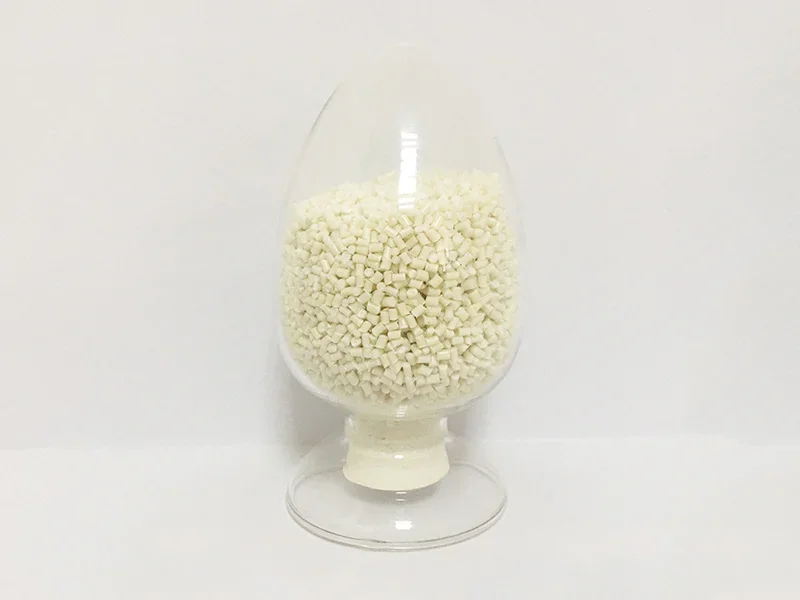Discover the sustainable solution to single-use plastic with bio-based plastics for straws. These innovative materials offer a renewable alternative, reducing environmental impact without compromising convenience. From cornstarch to sugarcane, bio-based plastics provide a biodegradable option for everyday items like straws. Embracing these eco-friendly alternatives promotes a greener future and supports the shift towards a circular economy. Join the movement towards sustainability by exploring the benefits of bio-based plastics for straws today.
Understanding Bio-Based Materials
Sources
Biopolymers and plant fibers are the primary components of bio-based materials. These materials differ from traditional plastics as they are derived from renewable resources like corn starch, sugarcane, or cellulose from plants.
Plant fibers, such as cellulose, are widely used in creating bio-based plastics for straws. Cellulose is a key component due to its abundance in nature and its ability to be processed into various forms.
Importance
Utilizing renewable resources in producing bio-based plastics for straws is crucial for sustainability. By using materials like plant fibers, companies can reduce their reliance on finite resources like petroleum. This shift towards sustainable alternatives helps decrease environmental impact and promotes a circular economy.
The Rise of PLA Straws
Popularity Surge
PLA straws have witnessed a remarkable surge in popularity in recent years. Consumers are increasingly opting for these bio-based alternatives due to their eco-friendly nature.
Unique Properties
PLA, derived from corn starch, boasts unique properties that set it apart from traditional plastics. Its biodegradable nature makes it an attractive option for environmentally conscious individuals.
Benefits Over Traditional Plastics
-
Eco-Friendly: PLA straws offer a sustainable solution, reducing the reliance on fossil fuels.
-
Biodegradability: Unlike traditional plastic straws, PLA straws break down naturally without harming the environment.
-
Renewable Source: Being derived from corn starch, PLA is sourced from renewable materials, further enhancing its appeal.
Growing Consumer Preference
As awareness about environmental issues continues to grow, consumers are actively seeking out sustainable alternatives. The rise of PLA straws aligns with this shift towards more eco-conscious choices.
Environmental Impact
The use of bio-based plastics like PLA helps in reducing the carbon footprint associated with traditional plastic production. This shift towards sustainable materials is crucial in combating plastic pollution and promoting a greener future.

Benefits of Bio-Based Straws
Environmental Impact
Bio-based straws offer environmental benefits by reducing the reliance on traditional plastic straws. They are derived from renewable resources like corn starch or sugarcane, minimizing the use of fossil fuels.
Plastic Pollution Reduction
Compostable straws play a crucial role in combating plastic pollution. Unlike conventional plastic straws that can take hundreds of years to decompose, bio-based alternatives break down much faster, reducing environmental harm.
Biodegradability and Compostability
One of the key advantages of bio-based straws lies in their biodegradability and compostability. When disposed of correctly, these straws can decompose naturally without leaving behind harmful microplastics, contributing to a cleaner environment.
Production Process of PLA Straws
Corn Resin Conversion
PLA straws are primarily made from corn resin, a renewable resource that reduces dependency on fossil fuels. Corn starch undergoes fermentation to produce lactic acid, which is then polymerized to form polylactic acid (PLA).
The corn-based plastic pellets are melted and extruded into long, thin tubes through a process called extrusion. This step gives the straws their shape and size before they are cut into individual pieces.
Sustainability Aspects
The production of PLA straws offers significant environmental benefits over traditional plastic alternatives. Corn-based plastics are biodegradable, reducing the strain on landfills and marine ecosystems.
Moreover, the cultivation of corn for PLA production can be sustainable if managed correctly. Crop rotation and responsible farming practices can ensure minimal environmental impact during raw material sourcing.

Comparing PLA with Traditional Plastics
Environmental Impact
PLA straws, derived from corn or sugarcane, offer a more eco-friendly alternative compared to traditional plastic straws. These bio-based plastics decompose naturally, reducing the environmental burden caused by conventional plastic waste.
Recyclability and Compostability
-
PLA straws are compostable, breaking down into organic matter without leaving harmful residues.
-
In contrast, traditional plastic straws, made from petroleum-based materials, pose significant challenges in recycling and often end up in landfills or oceans.
Sustainable Alternatives Importance
Choosing sustainable alternatives like PLA over traditional plastics is crucial for mitigating the adverse effects of plastic waste on the environment. By opting for PLA straws, consumers contribute to reducing landfill waste and marine pollution.
Environmental Impact of Bio-Based Straws
Reduced Plastic Pollution
Bio-based straws, made from renewable resources like corn starch or sugarcane, significantly reduce plastic pollution. Traditional plastic straws contribute to the vast amount of plastic waste in oceans and landfills.
Bio-based straws offer a sustainable alternative, as they are biodegradable and do not linger in the environment for centuries. This minimizes harm to wildlife and ecosystems caused by plastic waste accumulation.
Lower Carbon Footprint
Compared to traditional plastic straws, bio-based options have a lower carbon footprint. The production process for bio-based straws emits fewer greenhouse gases, contributing less to climate change.
By choosing bio-based straws over conventional ones, individuals can contribute to reducing overall carbon emissions, supporting efforts to combat global warming.
Promoting Circular Economy
Bio-based straws play a crucial role in promoting a circular economy. They are derived from renewable resources, ensuring a continuous supply without depleting finite fossil fuel reserves.
In contrast, traditional plastic straws rely on non-renewable petroleum-based sources, perpetuating a linear economy that leads to resource depletion and environmental degradation.
Implementing Bio-Based Solutions
Sustainable Choices
Individuals and businesses can implement bio-based solutions by opting for compostable straws made from pulp products. These straws are biodegradable and break down naturally, reducing plastic waste.
Supporting the use of bio-based alternatives like compostable straws is crucial for reducing environmental harm. By choosing these options, people contribute to lessening the reliance on fossil fuels and minimizing plastic pollution.
Collective Action
Collective action plays a vital role in reducing plastic waste through sustainable choices. When communities and businesses come together to support bio-based solutions, they create a significant impact on the environment.
Collaboration in adopting bio-based alternatives for straws can lead to a substantial decrease in plastic waste entering landfills and oceans. This concerted effort helps in preserving natural habitats and promoting a healthier ecosystem.
Informed Decision-Making
Making informed decisions about using bio-based alternatives involves understanding their biodegradability and benefits. It is essential to be aware of how these products degrade in different environments, such as soil burial or water immersion.

Final Remarks
The exploration of bio-based plastics for straws sheds light on a sustainable alternative to traditional plastic materials. Understanding the production process, benefits, and environmental impact of bio-based straws underscores their potential to mitigate the ecological repercussions of single-use plastics. By comparing bio-based PLA straws with their conventional counterparts, it becomes evident that embracing these innovative solutions can pave the way for a greener future.
Implementing bio-based solutions like PLA straws is not just an option but a responsibility towards preserving our environment. As consumers and businesses alike increasingly prioritize sustainability, the adoption of bio-based materials presents a tangible step towards reducing plastic pollution. By choosing bio-based alternatives, we contribute to a cleaner planet for future generations. Take action today by supporting and advocating for the use of bio-based plastics in everyday products.
Frequently Asked Questions
What are bio-based materials?
Bio-based materials are derived from renewable resources like plants. They offer an eco-friendly alternative to traditional plastics, reducing reliance on fossil fuels.
How do PLA straws benefit the environment?
PLA straws are biodegradable and compostable, reducing plastic waste pollution. They also have a lower carbon footprint compared to traditional plastic straws.
What is the production process of PLA straws?
PLA straws are made by extracting sugars from plants like corn or sugarcane. These sugars are fermented to produce lactic acid, which is then polymerized to create PLA resin for making straws.
How do bio-based straws compare to traditional plastics?
Bio-based straws, like PLA, are biodegradable and made from renewable resources. Traditional plastics, on the other hand, are derived from non-renewable fossil fuels and contribute significantly to environmental pollution.
Why should businesses consider implementing bio-based solutions?
Implementing bio-based solutions aligns with sustainable practices, reduces environmental impact, and meets consumer demand for eco-friendly products. It can also enhance brand reputation and attract environmentally conscious customers.






